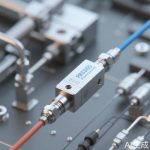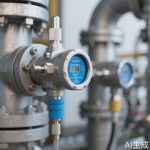In the world of modern climate control, HVAC temperature sensors are the unsung heroes that ensure comfort, efficiency, and reliability. These small yet powerful devices play a critical role in monitoring and regulating temperatures within residential, commercial, and industrial spaces. As technology continues to evolve, the importance of precise temperature sensing cannot be overstated. Whether it’s maintaining the perfect ambiance in a smart home or optimizing energy usage in a large office building, HVAC temperature sensors are at the heart of it all.
HVAC systems rely on temperature sensors to provide real-time data that informs heating and cooling operations. Without accurate readings, these systems would struggle to maintain consistent temperatures, leading to energy waste and discomfort. Advanced sensors today come equipped with features like wireless connectivity, self-calibration, and compatibility with IoT platforms. This allows for seamless integration into broader building management systems, enabling proactive adjustments and predictive maintenance.
One of the key benefits of modern HVAC temperature sensors is their contribution to energy efficiency. By precisely detecting temperature fluctuations, these sensors help HVAC systems avoid overworking, reducing energy consumption and lowering utility bills. In commercial settings, this can translate to significant cost savings over time. Moreover, efficient temperature regulation supports sustainability goals by minimizing the carbon footprint of buildings.
Durability and accuracy are hallmarks of high-quality HVAC temperature sensors. Designed to withstand harsh environments, including extreme temperatures and humidity, these sensors ensure long-term performance without frequent replacements. Innovations in materials and manufacturing have also led to sensors that offer greater precision, with minimal drift over time. This reliability is essential for applications where even minor temperature deviations can impact processes or comfort levels.
The integration of smart technology has taken HVAC temperature sensors to new heights. Many modern sensors are now part of interconnected ecosystems that allow users to monitor and control climate settings remotely via smartphones or computers. This not only enhances convenience but also provides valuable insights through data analytics. For instance, patterns in temperature data can reveal inefficiencies or potential issues before they escalate, enabling timely interventions.
In conclusion, HVAC temperature sensors are indispensable components that drive the effectiveness of climate control systems. Their ability to deliver accurate, real-time data empowers users to achieve optimal comfort while promoting energy conservation and sustainability. As technology advances, these sensors will continue to evolve, offering even greater precision and smarter features for a wide range of applications. Investing in high-quality HVAC temperature sensors is a step toward a more efficient and comfortable future.




Leave a Message